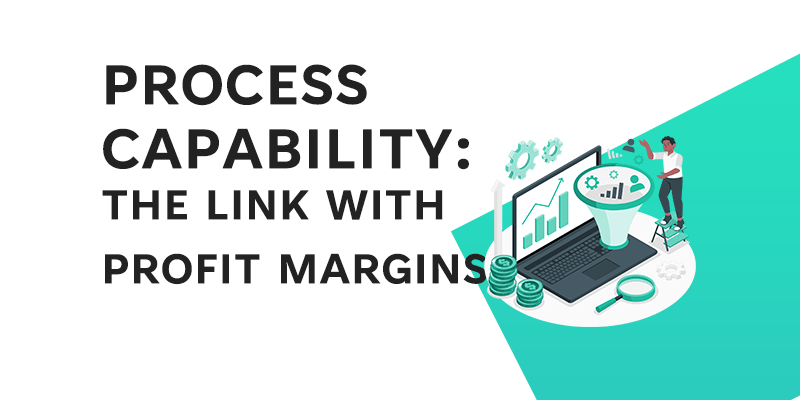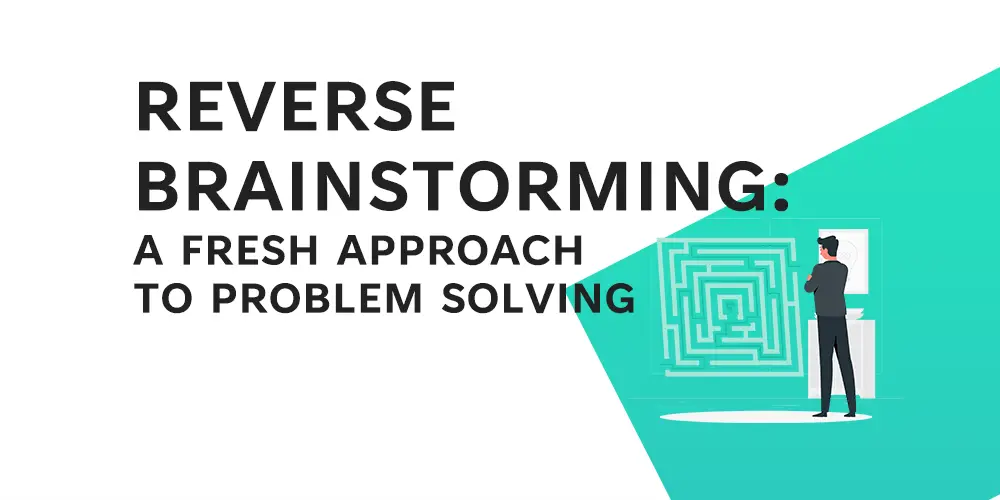Process capability is a crucial statistical tool in industries like manufacturing and services, gauging a process’s consistency in meeting specifications. It assesses the effectiveness of a process in consistently producing products or services that align with customer expectations. Efficient processes in manufacturing limit defective products, reducing waste and costs, while in services, they prevent inconsistencies that can lead to customer dissatisfaction.
Profit margins, reflecting the percentage of revenue exceeding costs, are vital indicators of a business’s financial health. A high profit margin suggests effective cost management and pricing, while a low one hints at inefficiencies. Optimized processes can enhance profit margins by lowering costs, reducing waste, and boosting product or service quality. This quality improvement often allows businesses to set premium prices, further elevating profit margins.
Table of Contents
Definitions and Basics
Process Capability:
- Definition and explanation: Process capability is defined as the inherent variability of a process in producing output within specification limits, without considering any external influences or disturbances. It provides insights into the performance of a process and its ability to produce goods or services that meet desired specifications. A higher process capability indicates that the process is more capable of producing outputs that adhere to specifications.
An example of a process capability chart is displayed below, this shows the distribution of outcomes from the output of the product or service. Anything within the red area would be identified as scrap or waste as it falls out side of the specification limits.
Learn more with our Process Capability Analyzer Tool

- The concept of Cp, Cpk, and other related metrics:
- Cp (Process Capability Index): It measures the potential capability of a process. A Cp value of 1 indicates that the process is producing outputs exactly within specification limits. A value greater than 1 suggests the process has the potential to produce outputs within specification limits, while a value less than 1 indicates potential issues.
- Cpk (Process Capability Ratio): This metric considers both the process mean and its variation. A Cpk value closer to 1 indicates a process centered within specification limits. A value greater than 1 is preferable, while a value below 1 might indicate issues.
- Other metrics like Pp and Ppk are also used, representing the overall capability and performance of a process.
Profit Margins:
- Definition and significance: Profit margin is a financial metric that represents the percentage of profit a company earns from its total revenue. It showcases the profitability of a company and is a vital tool for investors and stakeholders to gauge the financial health and performance of a business.
- Different types of profit margins:
- Gross Profit Margin: This is calculated by subtracting the cost of goods sold (COGS) from total revenue, then dividing by total revenue. It represents the percentage of revenue that exceeds direct product costs.
- Operating Profit Margin: This margin factors in operating expenses like wages and rent. It’s calculated by subtracting operating expenses from gross profit, then dividing by total revenue.
- Net Profit Margin: This is the bottom line for a company. It’s calculated by subtracting all expenses, including taxes and interest, from total revenue, and then dividing by total revenue. It provides insights into how much profit a company retains from every dollar of revenue after all expenses.
How Process Capability Affects Costs
Reduced wastage: An efficient process with high capability will have fewer deviations from the desired specifications. This means there will be fewer defective items or services that don’t meet the required standards. In industries like manufacturing, this translates directly to reduced material waste as fewer items are discarded or scrapped. For service industries, this means fewer service errors that need to be rectified, saving both time and resources.
Lower rework costs: Rework, in any industry, can be expensive. For instance, in manufacturing, reworking a product might involve dismantling, repairing, and then reassembling. High process capability ensures that outputs (whether products or services) are produced right the first time, minimizing the need for rework. Thus, costs associated with corrections, additional labor, and materials are significantly reduced.
Reduced inspection costs: A process that is highly capable and predictable reduces the need for intensive and frequent inspections. When there’s confidence that a process will produce consistent and high-quality results, there’s less need to inspect every output. This can save significant amounts of time and money, particularly in industries where inspection processes are lengthy and costly.
Decrease in warranty and return costs: Quality products or services are less likely to fail or disappoint customers. When customers receive products that work as expected or services that meet their needs, the frequency of returns, complaints, and warranty claims drops. Handling returns and warranty claims can be expensive, involving logistics, labor, and sometimes compensation or replacements. Therefore, a higher process capability can lead to significant savings in these areas.
The Direct Impact on Profit Margins
Improved quality: Quality has a direct correlation with pricing. Products or services that are known for their superior quality can often command premium prices in the market. This is because consumers are generally willing to pay more for items they believe are reliable, durable, or superior in performance. Thus, by improving process capability and thereby quality, companies can potentially increase their pricing, leading to higher profit margins.
Consistency in production: Consistency ensures that there are predictable outputs in terms of quality and quantity. This predictability can lead to stable revenue streams. Moreover, consistent quality reduces costs (as discussed in the previous section), which can lead to better profit margins. Additionally, consistent production schedules can lead to better inventory management, reducing holding and shortage costs.
Enhanced brand reputation: A company known for its high process capability and, by extension, quality products or services, will earn a reputation for reliability. This reputation can lead to increased customer loyalty, word-of-mouth recommendations, and potentially a larger market share. All these factors can lead to increased sales. Moreover, a strong brand reputation can also allow companies to charge premium prices, further enhancing profit margins.
Real-world Examples
Case study 1: Manufacturing Company
Background: A manufacturing company, let’s call it “AutoTech,” specialized in producing automobile parts. They had a significant issue with defective parts, leading to returns, warranty claims, and increased production costs.
Action: AutoTech decided to invest in process capability improvement. They employed Six Sigma methodologies, focusing on reducing variability in their production process. They also trained their staff in these methods and invested in new machinery.
Result: Over a year, AutoTech saw a significant reduction in the number of defective parts produced. This led to:
- Reduced wastage and rework costs.
- A decrease in warranty and return costs.
- Enhanced reputation as a reliable parts supplier.
- Ability to command higher prices for their high-quality parts.
All these factors combined resulted in a substantial increase in AutoTech’s profit margins.
Case study 2: Service Industry
Background: A call center named “HelpLine” faced challenges with long call times, high employee turnover, and inconsistent service levels.
Action: HelpLine decided to improve its processes by:
- Implementing a rigorous training program for new employees.
- Incorporating a quality assurance process to monitor and improve call quality.
- Using data analytics to identify peak call times and staff accordingly.
Result: Within months, HelpLine saw:
- Reduced call times leading to handling more calls efficiently.
- Improved customer satisfaction leading to increased business from existing clients and acquiring new ones.
- Lower employee turnover, reducing hiring and training costs.
These improvements led to greater profitability for HelpLine, showcasing the importance of process capability even in the service industry.
Challenges in Linking Process Capability to Profit Margins
The time lag between implementing process improvements and seeing financial results: Process improvements, especially major ones, do not yield immediate financial results. It can take time for the benefits to materialize fully. This can sometimes lead to skepticism among stakeholders, who may expect quicker returns on investments made in process improvements.
External factors such as market demand, competition, and economic conditions: Even if a company has a highly capable process and produces high-quality goods or services, external factors can impact its profitability. For instance, a sudden drop in market demand, increased competition, or unfavorable economic conditions can overshadow the financial benefits gained from process improvements.
Internal factors like organizational resistance to change and the cost of implementing new processes: Change is often met with resistance, especially in large, established organizations. Employees may be skeptical or fearful of new processes, tools, or methodologies. Moreover, there’s a cost associated with implementing new processes – training, new equipment, or software can require significant investment. These factors can delay or even offset the financial benefits gained from improving process capability.
Strategies to Maximize the Benefits
Continuous improvement: One of the foundational principles of quality management is the idea of continuous improvement. Rather than seeing process improvement as a one-time project, businesses should embed a culture of ongoing assessment and enhancement. By regularly reviewing and refining processes, companies can adapt to changes, correct emerging issues, and capitalize on new opportunities to increase efficiency.
Employee training: The best processes can falter without well-trained employees to execute them. Staff should not only be trained in the technical aspects of their roles but also in understanding the broader importance of process capability. By understanding the link between process capability and profitability, employees can be more motivated and proactive in ensuring processes are adhered to and optimized.
Investing in technology: In our modern age, technology plays a crucial role in enhancing process capability. Whether it’s automation tools that reduce variability in manufacturing, data analytics that provide insights into service delivery, or software that streamlines administrative processes, the right technology can significantly boost process capability. However, it’s essential to choose technology solutions that align with the business’s specific needs and challenges.
Customer feedback: Customers are often the best source of insights into process effectiveness. They experience the end product or service and can provide valuable feedback on quality, timeliness, and their overall satisfaction. Regularly collecting and analyzing customer feedback can highlight areas for process improvement that might not be evident internally.
Further Reading/Resources
Books:
- “The Six Sigma Way: How to Maximize the Impact of Your Change and Improvement Efforts” by Peter S. Pande, Robert P. Neuman, and Roland R. Cavanagh.
- “Process Quality Assurance for UML-Based Projects” by Bhuvan Unhelkar.
Tools and software:
- LearnLeanSigma: Process Capability Analyzer
- Minitab: A widely-used statistical software that offers a range of tools for analyzing process capability.
- Process Capability Excel Add-in: A tool for Excel that simplifies the process capability analysis process.
By exploring these resources, businesses can gain a deeper understanding of process capability and its importance, and find practical tools and strategies to enhance their processes and profitability.








